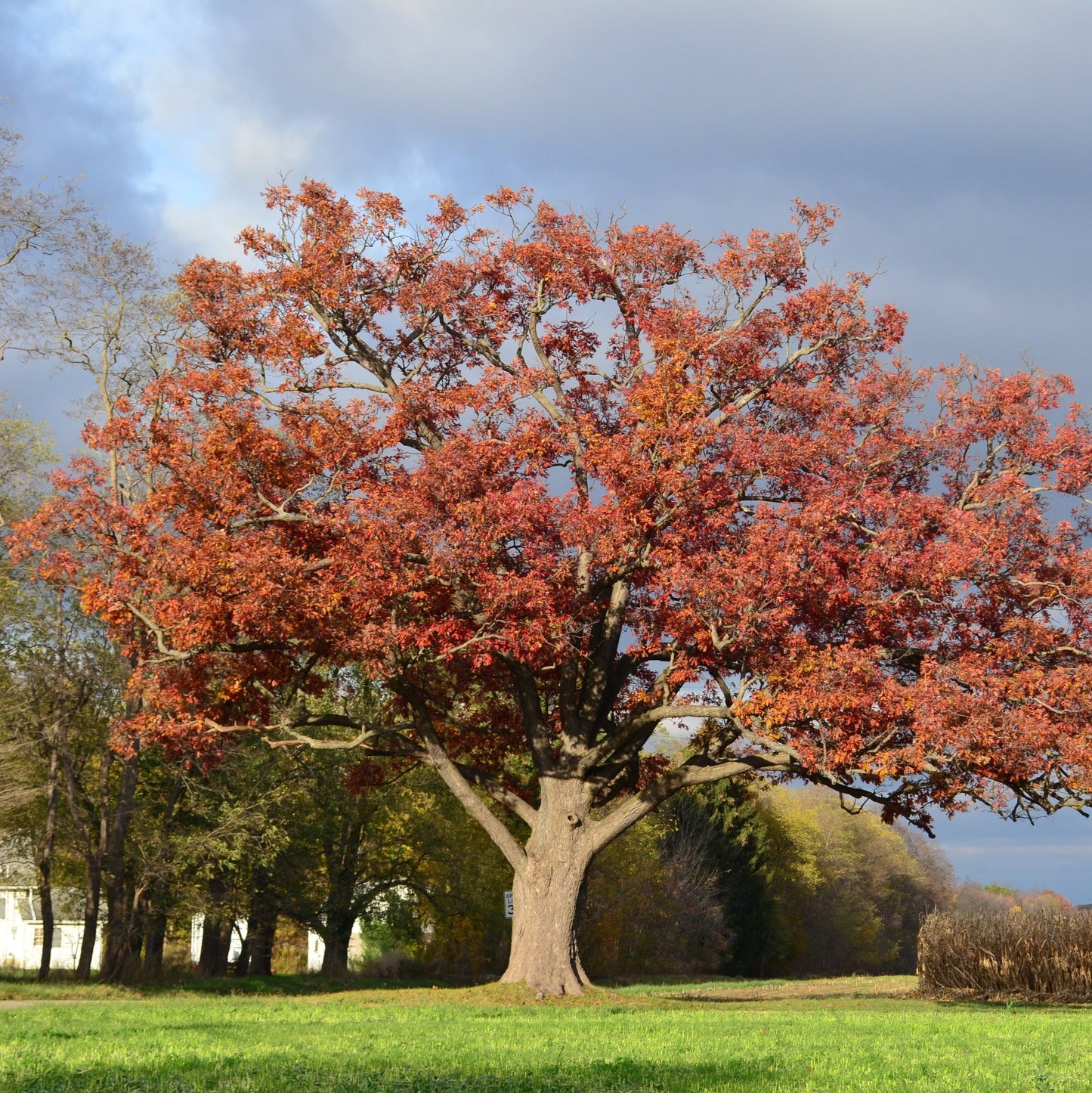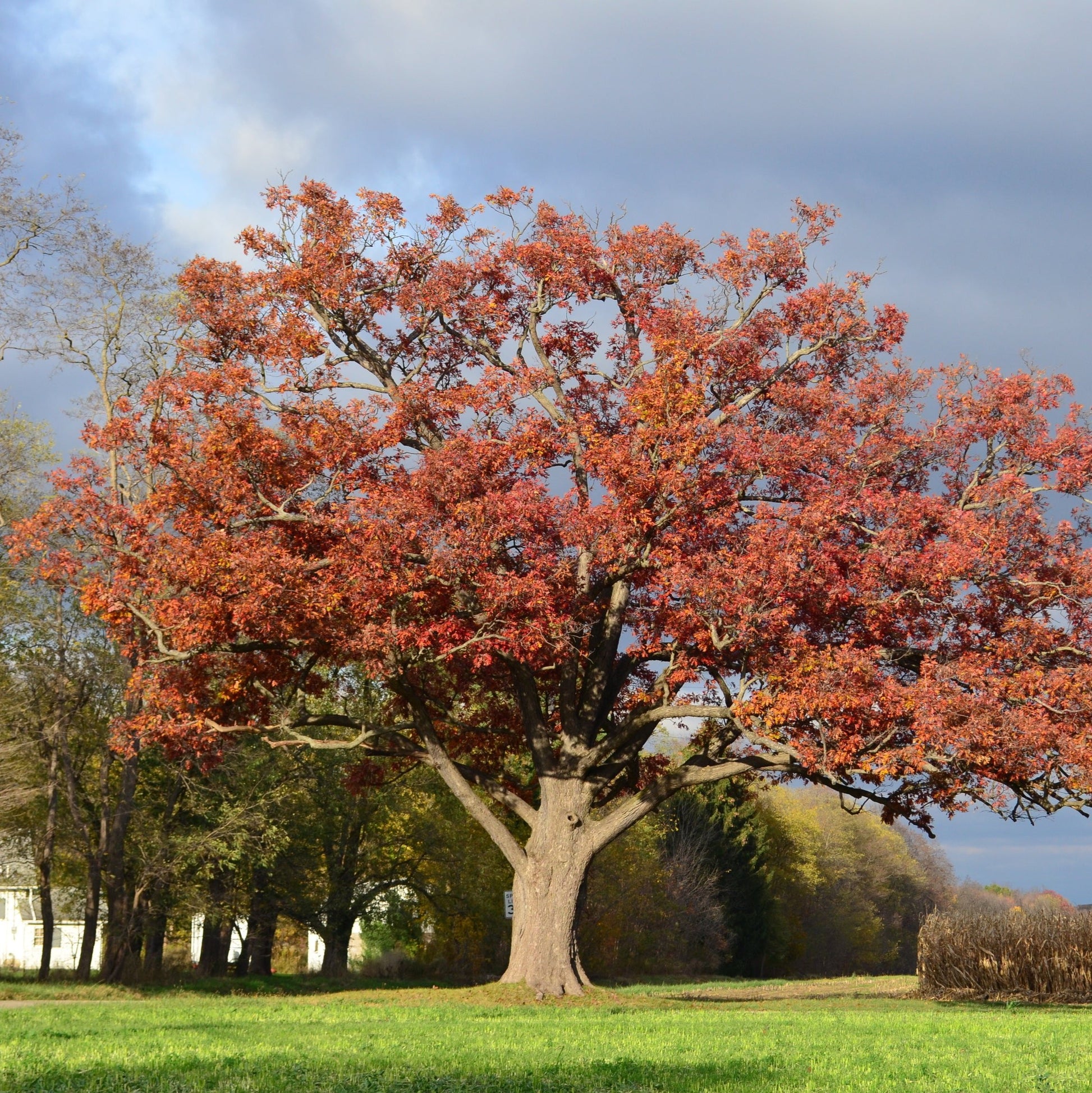Spring Planting Season is Here!! Grow Stronger, Healthier Trees for Less!!
Bare root trees grow faster, cost 50% less, AND establish much better than potted trees. PLUS they leave a much smaller environmental footprint. Order NOW before the season ends!
Nuttall Oak Tree
Nuttall Oak Tree
Couldn't load pickup availability
Quercus texana
Nuttall Oak Tree –
The Nuttall Oak Tree is a fast-growing, long-lived native oak known for its bold structure, glossy lobed leaves, and heavy acorn production. Ideal for both urban landscapes and large-scale habitat restoration, this tree thrives in moist, bottomland soils and adapts well to a range of site conditions.
Offering excellent fall color, rapid growth, and outstanding wildlife value, the Nuttall Oak is a go-to species for shade, ecological restoration, and future legacy plantings in the southeastern and central U.S.
Nuttall Oak Tree Overview
| Attribute | Details |
|---|---|
| 🌿 Botanical Name | Quercus texana |
| 🏷️ Common Names | Nuttall Oak, Texas Red Oak |
| 🌳 Mature Height | 50–80 feet |
| 🌐 Mature Width | 35–60 feet |
| 📈 Growth Rate | Fast (2–3 feet per year) |
| ⏳ Lifespan | 80–150+ years |
| 🧊 USDA Zones | 5–9 |
| ☀️ Sun Preference | Full sun (critical for strong crown development) |
| 🧱 Soil Type | Moist, well-drained loam, clay, or sandy soils |
| ⚖️ Soil pH | Slightly acidic to neutral (5.5–7.0) |
| 💧 Water Needs | Moderate; tolerates wet soils and seasonal flooding |
| 🍁 Fall Color | Bright red to russet foliage in autumn |
| 🌰 Acorn Production | Heavy producer; food source for wildlife |
| 🐝 Pollination | Wind-pollinated; high-value for wildlife and native fauna |
| 🌿 Growth Habit | Upright, rounded canopy with strong central leader |
| ↔️ Spacing | 30–60 ft for shade or naturalized groves |
| 🏡 Landscape Uses | Shade tree, wildlife corridors, street tree, reforestation |
| 🧹 Maintenance Level | Low |
Environmental Benefits
🌰 Produces abundant acorns that feed deer, ducks, squirrels, and songbirds
🌿 Supports native biodiversity and pollinator-friendly ecosystems
🌳 Provides dense summer shade and stormwater mitigation
🌎 Ideal for riparian buffers, floodplain planting, and climate-adapted forestry
Pros & Cons
| ✅ Pros | ⚠️ Cons |
|---|---|
| 🌳 One of the fastest-growing oaks with a long lifespan | 🍂 Leaf and acorn drop may require cleanup in formal landscapes |
| 🌰 Heavy acorn production makes it highly valuable to wildlife | 🪵 Not ideal for very small yards due to mature size |
| 🏞️ Excellent for floodplain and bottomland restoration | 🌱 Requires space to reach full potential |
| 🍁 Bold red fall color adds seasonal beauty | ✂️ Pruning may be needed when young to establish strong branch structure |
| 🧬 Tolerant of poor drainage, drought, and urban conditions | ❄️ Slower to develop full form in extremely cold climates |
Planting & Care Guide
🛁 Water thoroughly at planting and maintain regular watering during establishment
🕳️ Dig a hole 2–3× wider than the root zone; plant at the same depth as in nursery
🌾 Apply 2–4 inches of mulch around base; avoid contact with trunk
💦 Water weekly for the first 1–2 years, especially in dry periods
✂️ Prune in late winter to shape canopy and develop a strong leader
🧪 Fertilize only if soil is nutrient-deficient; prefers undisturbed, organic soils
The Nuttall Oak Tree is a hardy native powerhouse that combines rapid growth, wildlife support, and stunning fall color into one adaptable tree. Whether you’re planting for shade, conservation, or habitat, the Nuttall Oak offers lasting beauty and ecological function for generations to come.
Share


